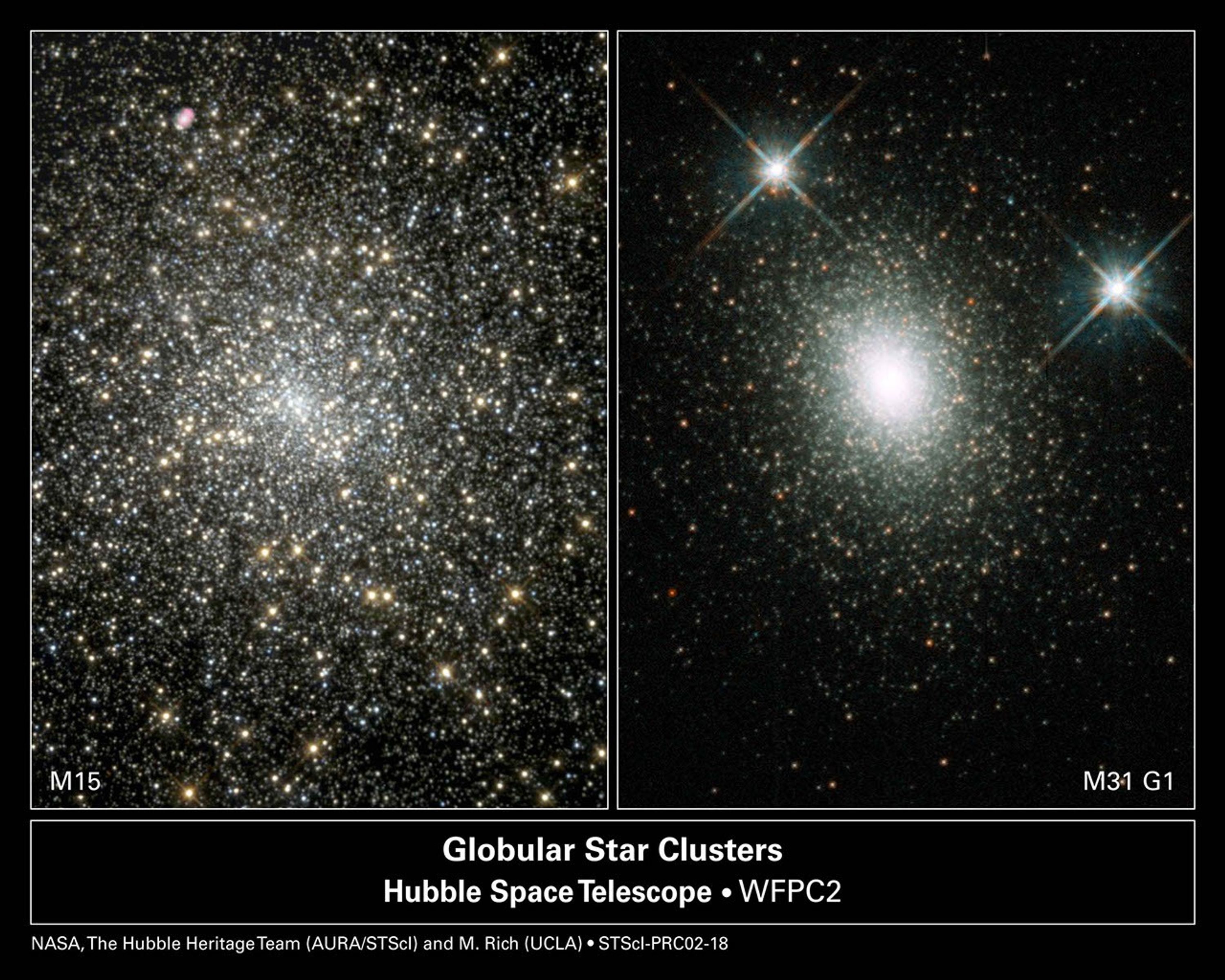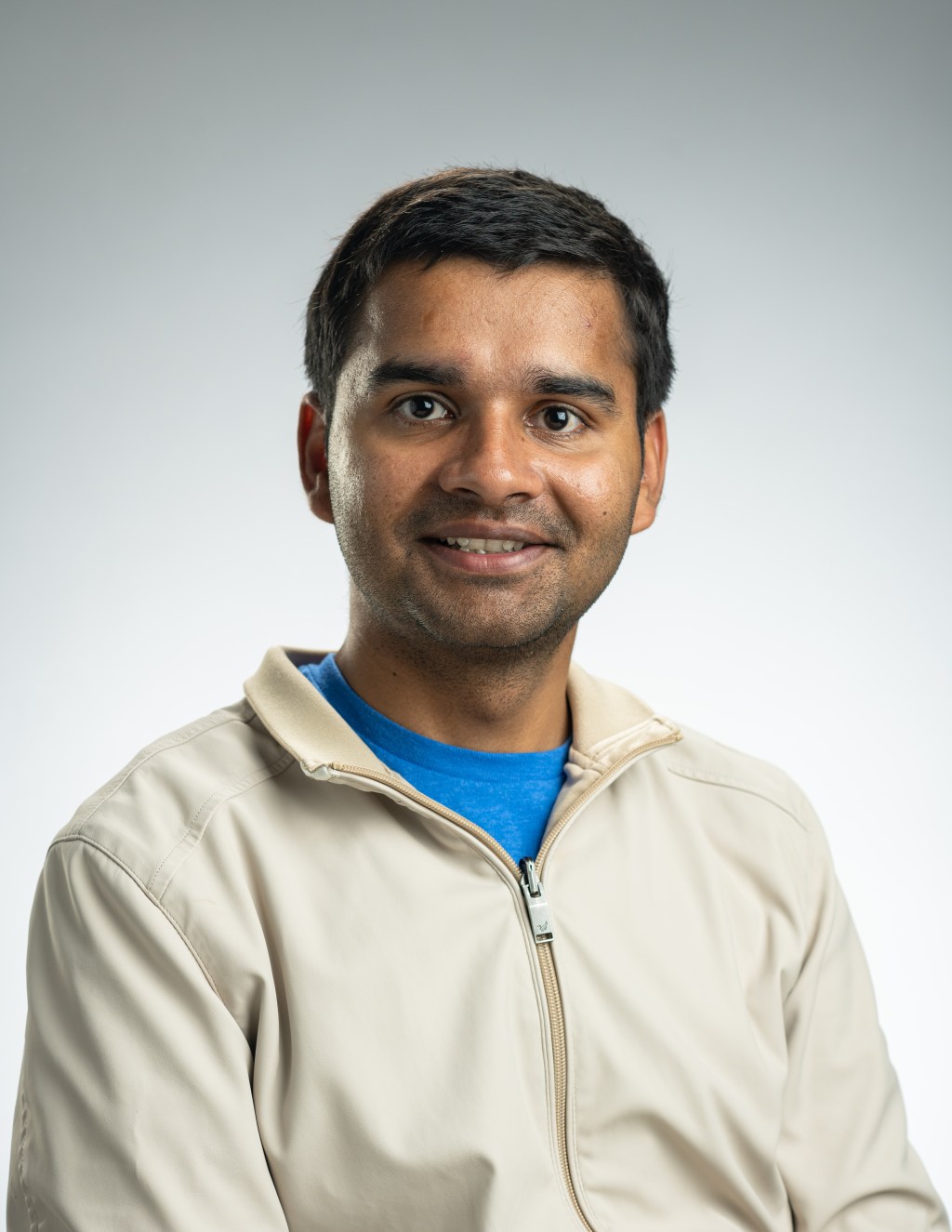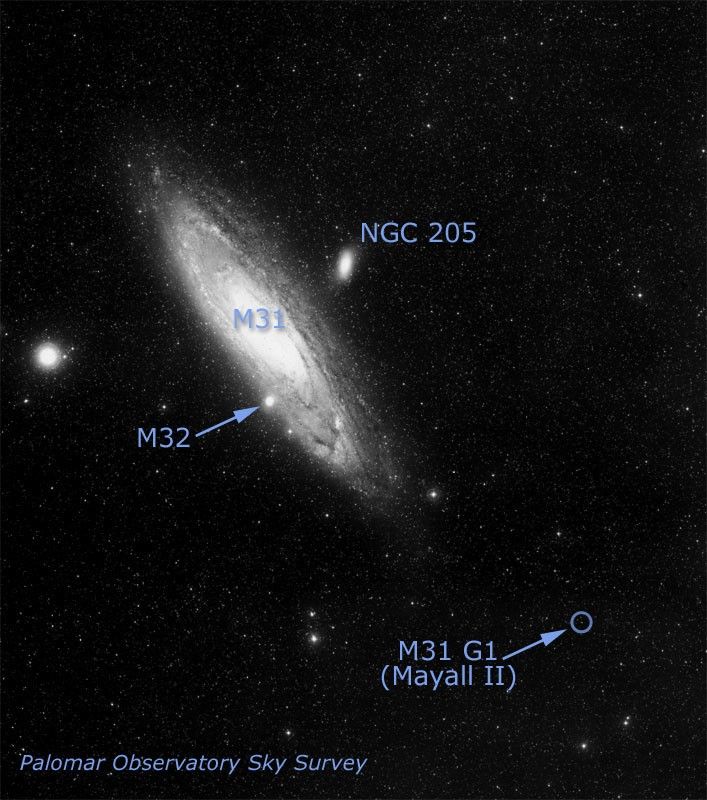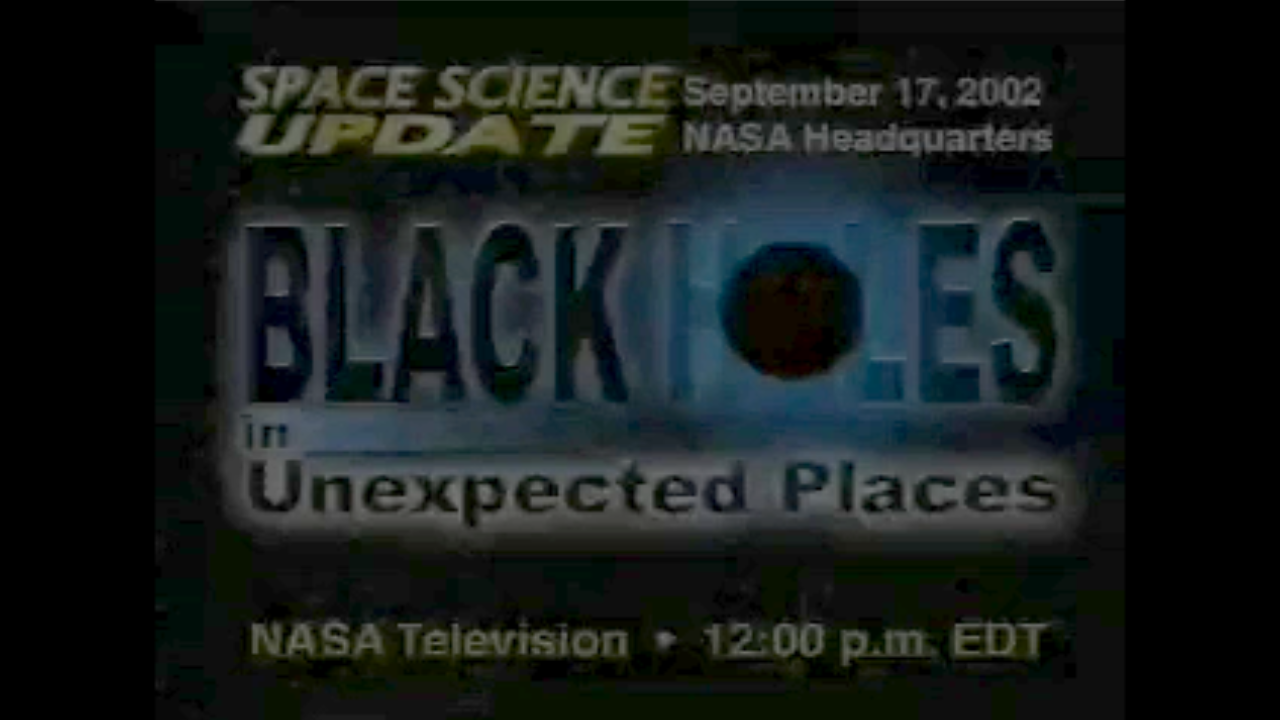1 min read
Black Holes Unexpectedly Discovered in Globular Clusters M15 and G1

These two globular star clusters, M15 and G1, harbor hundreds of thousands of stars. But deep within their dense cores is an unexpected guest: a class of intermediate-sized black holes. Black holes are invisible, but the probing eye of NASA's Hubble Space Telescope found them by measuring the velocities of stars whirling around the crowded cores. Using spectral observations, astronomers discovered that the stars orbiting the cores of M15 and G1 moved at a much faster rate, which suggested the presence of unseen massive bodies. These previously undiscovered black holes provide an important link that sheds light on the way in which black holes grow.
The new findings promise a better understanding of how galaxies and globular clusters first formed billions of years ago. Globular star clusters contain the oldest stars in the universe. If these clusters have black holes now, then they most likely had black holes when they formed billions of years ago.
The black hole in M15 [left] is 4,000 times more massive than our Sun. G1 [right], a much larger globular cluster, harbors a heftier black hole, about 20,000 times more massive than our Sun.
The globular star cluster M15 resides 32,000 light-years away in the constellation Pegasus. M15 is one of nearly 150 known globular clusters that form a vast halo surrounding our Milky Way galaxy. G1, located 2.2 million light-years away in the neighboring Andromeda galaxy (also known as M31), has a total mass of 10 million suns, making it one of the most massive globular clusters known.
The Hubble telescope photograph of M15 was taken December 1998 by the Wide Field and Planetary Camera 2. Hubble's Wide Field and Planetary Camera 2 also snapped the image of G1, in July 1994.
The members of the G1 research team are Michael Rich (University of California, Los Angeles/UCLA), Karl Gebhardt (University of Texas at Austin), and Luis Ho (Carnegie Institute of Washington). The members of the M15 research team are Roeland Van Der Marel and Joris Gerssen (Space Telescope Science Institute), Karl Gebhardt, Puragra Guhathakurta and Ruth Peterson (UCO/Lick Observatory, University of California at Santa Cruz), and Carlton Pryor (Rutgers University).
About the Data
- Data DescriptionData DescriptionProposal: A description of the observations, their scientific justification, and the links to the data available in the science archive.
Science Team: The astronomers who planned the observations and analyzed the data. "PI" refers to the Principal Investigator.M15 image: WFPC2 Data Principal Astronomers: H. E. Bond (STScI), D. R. Alves (Columbia Astrophysics Lab.), M. Livio, L. K. Fullton and K. G. Schaefer (STScI) STIS Data Principal Astronomers: R. Van Der Marel and J. Gerssen (STScI), K. Gebhardt (U. Texas at Austin), P. Guhathakurta and R. Peterson (UCO/Lick Observatory) and C. Pryor (Rutgers U.) G1 image: WFPC2 Data Principal Astronomers: M. Rich (UCLA), K. Mighell (NOAO), and J. Neill (Columbia U.), and W. Freedman (Carnegie Observatories) STIS Data Principal Astronomers: M. Rich (UCLA), K. Gebhardt (U. Texas at Austin), and L. Ho (Carnegie Inst. of Washington) - InstrumentInstrumentThe science instrument used to produce the data.HST>WFPC2 and HST>STIS
- Object NameObject NameA name or catalog number that astronomers use to identify an astronomical object.M15, NGC 7078 (right); G1 in M31, Mayall II (left)
- Object DescriptionObject DescriptionThe type of astronomical object.Globular Cluster in the Milky Way Galaxy
- Release DateSeptember 17, 2002
- Science ReleaseHubble Discovers Black Holes in Unexpected Places
- CreditM15 image: NASA and The Hubble Heritage Team (STScI/AURA); G1 image: NASA and Michael Rich (UCLA); Science: NASA, Roeland Van Der Marel and Joris Gerssen (Space Telescope Science Institute), Puragra Guhathakurta and Ruth Peterson (University of California Observatories/Lick Observatory), Carlton Pryor (Rutgers University), Michael Rich (UCLA), Karl Gebhardt (University of Texas), and Luis Ho (Carnegie Institution of Washington)
Related Images & Videos
Share
Details
Claire Andreoli
NASA’s Goddard Space Flight Center
Greenbelt, Maryland
claire.andreoli@nasa.gov







































